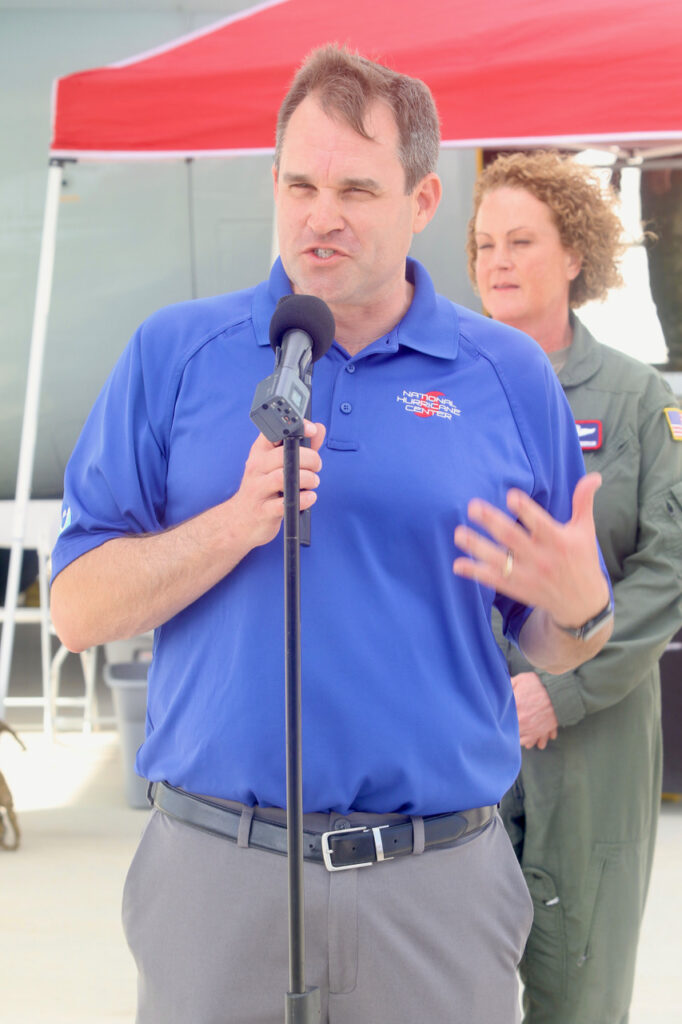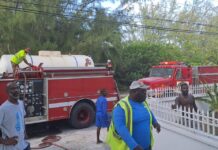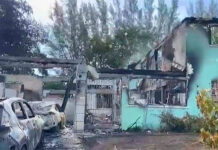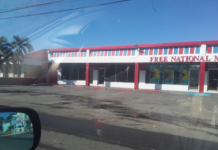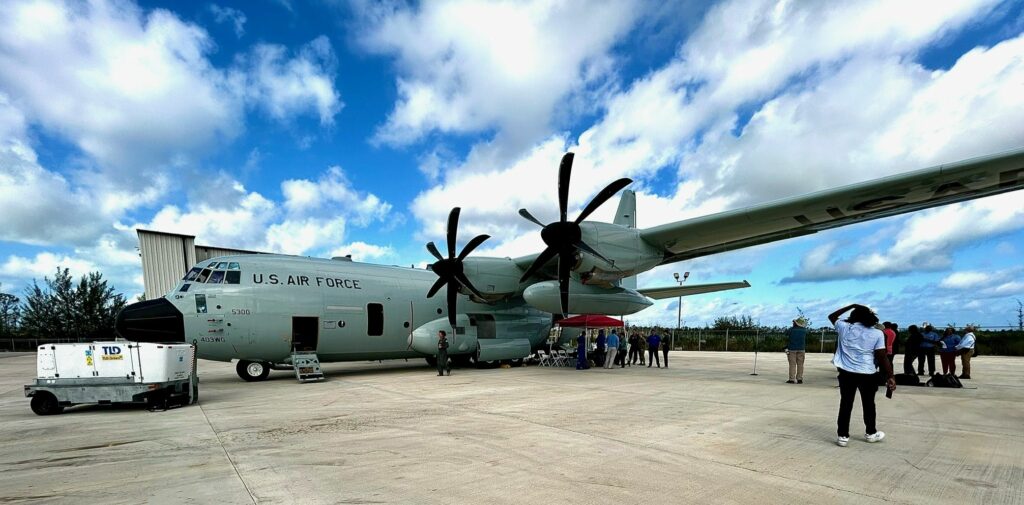
NASSAU, The Bahamas – The United States Air Force Reserve’s WC-130J Hurricane Reconnaissance Aircraft (Hurricane Hunter) departed New Providence Wednesday morning (April 17), concluding the first leg of its 2024 Caribbean Hurricane Awareness Tour.
The Hurricane Hunter’s crew was comprised of personnel from the 53rd Weather Reconnaissance Squadron based in Biloxi, Mississippi, U.S.A. and the National Oceanic and Atmospheric Administration (NOAA). They were accompanied by officials from the National Hurricane Centre (NHC).
Additional legs of the Tour took the aircraft to Barbados (Thursday, April 18), Saint Lucia (Friday, April 19), and Aguadilla, Puerto Rico, (Saturday, April 20). The job of the crew of a Hurricane Hunter is to fly the specially equipped aircraft directly into the eye of the storm to collect crucial data that helps protect lives and property. The first crewed flight into a Hurricane occurred in 1943 in Galveston, Texas, U.S.A., when a pilot-trainer flew into a Category I Hurricane on a bet.
Officials at The Bahamas Department of Meteorology, along with its partners at the Ministry of Disaster Risk Management, the National Emergency Management Agency (NEMA) and the Disaster Reconstruction Authority (DRA), used the visit as a lead-in to the launch of the observance of Disaster Preparedness Month scheduled for May, and the start of 2024 Atlantic Hurricane Season which begins June 1 and ends November 30.
The visit was also part of the Met. Department’s ongoing education and awareness campaign designed to drive home the importance for citizens and residents to begin preparations for the upcoming Hurricane Season.
Local meteorologists, Disaster Risk Managers and Planners, Emergency Management Personnel, members of the local media, and students from both private and public schools in New Providence, were provided with an opportunity to tour, and be briefed by the U.S. Air Force Reserve crew about their operations.
Mr. Jeffrey Simmons, Acting Director of the Bahamas Department of Meteorology, said while modern satellites have improved the ability of meteorologists to detect cyclones before they form, only aircraft are able to measure the interior barometric pressure of a hurricane and provide accurate wind speed data — information needed to accurately predict hurricane development and movement.
“We thank you for including us in the list of countries for the Tour this year so that Bahamians can stop in and see what this aircraft really looks like. As meteorologists we depend on the work you do in getting out there and actually getting into the middle of those hurricanes and getting the information/data to us,” Director Simmons said.
“May is Hurricane Preparedness Month and so we are getting started early with this visit. This is something that NEMA is partnering with the Department of Meteorology on, and so this is the start of our hurricane preparedness. We like to ensure that our citizens and residents are secure and prepared and know what to do.”
Counterparts from the National Oceanic Atmospheric Administration, the National Hurricane Centre and the US Air Force Reserve, use the Tours as a means of visiting vulnerable communities, such as The Bahamas and indeed the Caribbean region, to discuss hurricane preparedness, resilience and how people can become weather-ready ahead of hurricane season. Tours of the Air Force Reserve Command’s WC-130J “Hurricane Hunter” aircraft will showcase how scientists collect data about hurricanes.
During hurricanes, military aircrews fly state-of-the-art WC-130J aircraft directly into the core of the storm to gather critical data for forecasting a hurricane’s intensity and landfall. The data is sent in real-time via satellite from the aircraft directly to the National Hurricane Centre for analysis and use by hurricane forecasters.
Michael Brennan, Director of the National Hurricane Centre in Miami, Florida, said the visit is part of the longstanding partnership with the Met. Department.
“We talk about how important it is to share information and that constant communication is really key as we are forecasting and communicating for 25-30 countries,” he said. “It’s all kind of being part of an inter-connected team and we go out and get the information, the data that you guys can use to make decisions to ultimately protect lives and property. With The Bahamas being one of our closest neighbours, the communication and data that we get from the Met Office and the information we are able to provide to them, is key to protecting lives and property.” (BIS Photos/Kristaan Ingraham)


